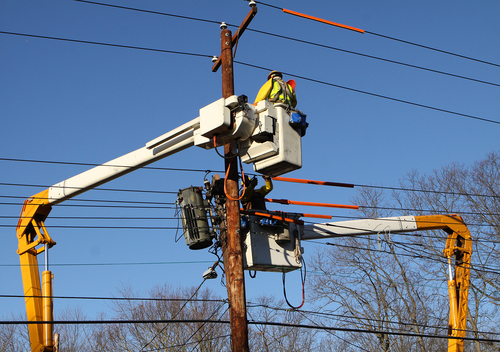
Langdon & Emison recently obtained a confidential settlement on behalf of a Missouri man who was severely shocked by overhead power lines that did not meet national clearance standards and were not inspected properly. Bob Langdon and Mark Emison served as lead attorneys on the case.
On June 3, 2009, Ronald Minter worked on top of a canopy in Lathrop, Mo., that was adjacent to 7,200 volt power lines owned and maintained by Union Electric (Ameren UE). As Minter removed metal skirting on the edge of the canopy, a high-power electrical transfer occurred. Minter suffered severe burns to his arms, chest, and thighs. Doctors had no choice but to amputate Minter’s right arm. After several surgeries, doctors saved Mr. Minter’s left arm, but it will have limited function for the rest of his life.
When contact with power lines occurs, most lines are designed to de-energize and shut off the electrical current. De-energization equipment, such as circuit reclosers, limit electrical exposure to a fraction of a second rather than several seconds.
Langdon & Emison’s investigation showed that the recloser did not operate properly. The manufacturer of the recloser used on the subject lines requires that the reclosers be tested every three years. Despite being installed in 2002, Ameren UE did not inspect the equipment prior to the incident – seven years later.
“The power lines did not properly de-energize,” said attorney Bob Langdon. “As a result, our client was shocked for at least two seconds instead of a tenth of a second. That difference caused Ron to lose his arm.”
The subject power lines also had a dangerously inadequate clearance to the subject canopy and violated both the National Electrical Safety Code (NESC) and Ameren UE’s internal standards, Langdon said.
Despite working on the subject lines in 2003 and 2006, Ameren UE failed to identify and remedy the clearance hazard. In addition, Ameren UE hired Utilimap Corporation, based in St. Louis, to inspect the lines. Utilimap inspected the power lines in 2008 but also failed to identify the clearance hazard.

